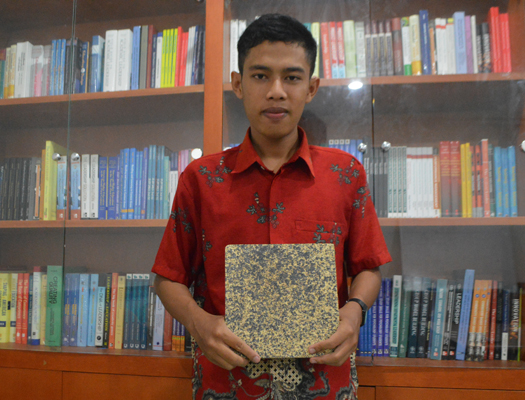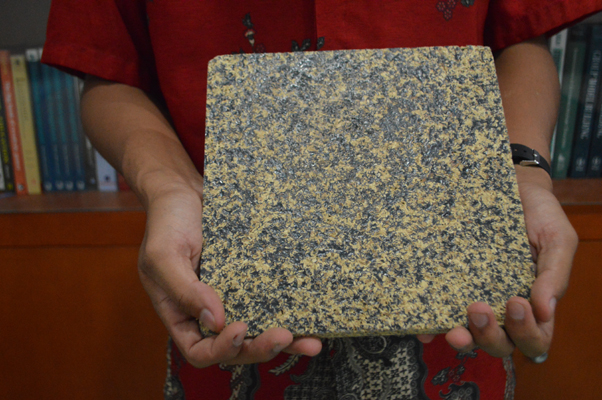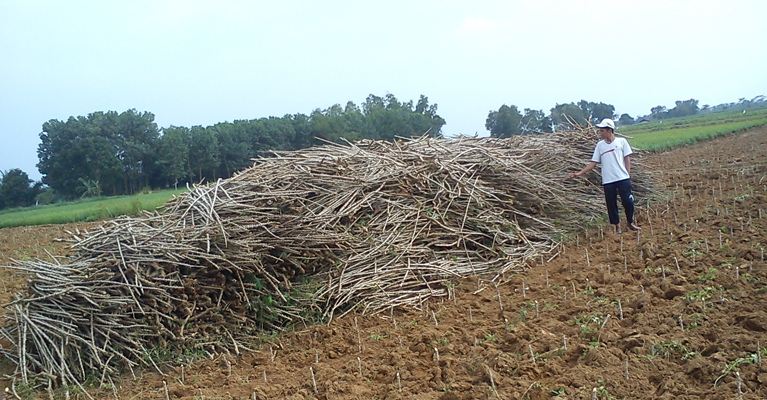Cassava is a tuber that is popular in Indonesia. But now, there are other parts of the plant that can also be used by people. A group of Universitas Gadjah Mada students: Endri Geovani and Abdul Malik (Faculty of Agriculture) and Novita, Supa, and Warsita Nur Fadhillah (Faculty of Forestry) have made a particle board from the plant stem, named as Pibes Board.
The Pipes Board also made them winning the Silver Medals during the Asian Young Inventors Exhibition (AYIE) 2015 in Malaysia, also Gold Medals from World Intellectual Property Association (WIPA) during the International Invention Innovation& Technology Exhibition (ITEX) 2015 in Taiwan. Previously, they won the National Grand Champion during the LKTI competition at Universitas Diponegoro and first winner of LKTI at Universitas Sultan Ageng Tirtayasa for this innovation.
Endri said the development of cassava stem particle board started from his hometown in East Lampung. The local people mostly grew cassava. After harvesting, the stems would normally be thrown away.
“The cassava stems are usually piled up then burned down to prevent from mice nesting in the pile that may also attack other agricultural plants,” he said on Thursday (28/1) at PKM Center UGM.
Cassava plants were abound in East Lampung. In 1 hectare of land, up to 15,625 trees can produce as many as 31,250 meter of stems. Farmers would only use some 20% of them for replanting.
Further research found out that the stem contains cellulose contents with a structure similar in wood. Cassava stem contains 21.5 percent of cellulose, 12 percent of hemicellulose, and 23 percent of lignin. This gave him an idea to use the stem as the main material. Endri uses the variety of Kasetsart (UJ-3) that is plentiful there.
Various researches were conducted by the students to get the right formula that can produce a strong, flexible and light board. They also added the HDPE plastic waste to the pipes board.
Finally, Endri and fellow students were able to produce a cassava stem particle board. The density parameter and internal bonding (IB), this board ranks above the figure of the Indonesian National Standard(SNI) 08-2105-2006, which is 0.7-0.72 gr/cm³ and IB 2.25kgf/cm³. Meanwhile, density value and internal bonding according to the SNI consequently are 0.4-0.9 gr/cm³ and 1.5 kgf/cm³.
“The result showed that the cassava stem particle board has density value and internal bonding above the SNI figure. Testing showed the thickness and water absorption is less than 30 percent or near the SNI figure,” said the student of Agricultural Coaching and Communication.
Endri mentioned the potential of the particle board for development as cassava is aplenty in the country.
“Of 1 hectare of cassava plantation, as many as 5,625 boards can be produced measuring 30 cm x 30 cm x 1 cm each,” he said.
The particle board has good quality similar to that of wood. “Hopefully, the raw material for board industry from the forest can be supplied by the cassava stems,” he concluded.





